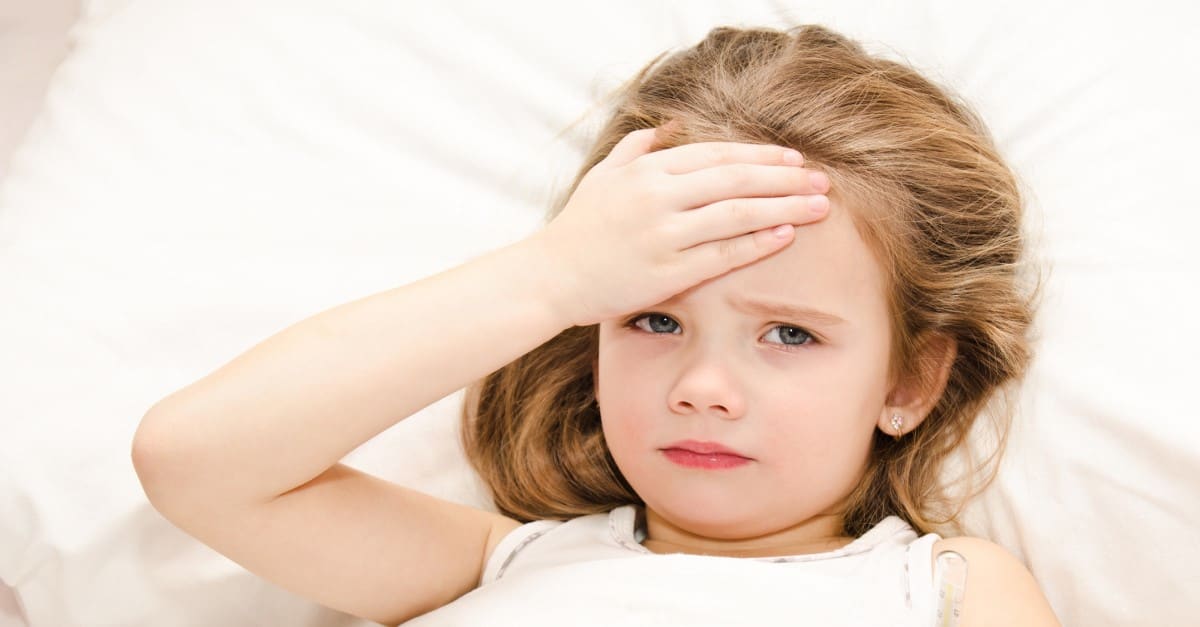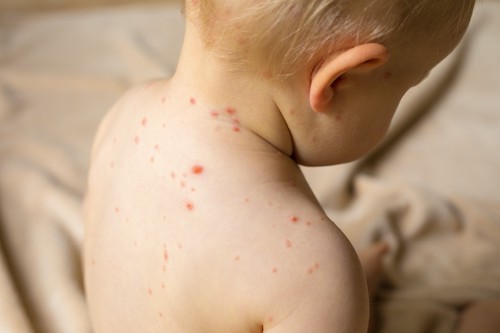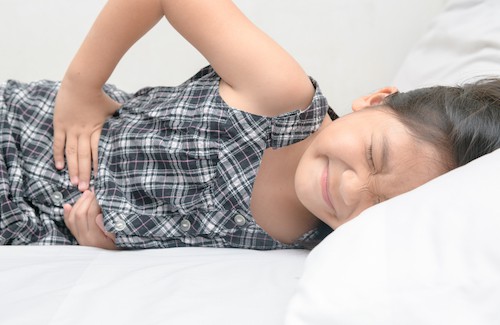The 10 Most Common Childhood Diseases – Signs and Symptoms

Childhood diseases like scarlet fever and bronchiolitis might be very common, but there are preventative measures to reduce the risk. Find out about symptoms and signs of common childhood illnesses!
A part of being a kid is getting sick and there are also many illnesses to grapple with. The common cold is familiar enough, but plenty of other ailments can afflict your little one. If you’re wondering what childhood diseases and illnesses are in store and how to diagnose them, we have information that can help!
Dangerous Are Childhood Diseases?
Adults know that getting the common cold or flu is just a part of life. It can be a lot more difficult as a parent to see our kid’s struggle with illness though. But, given that infants and children haven’t been exposed to infections, they haven’t developed immunity to germs. That means that they’re going to have to deal with childhood diseases and symptoms. Kids tend to touch everything and suck their thumbs too, so the probability is even higher! However, most common childhood illnesses can be dealt with speedily. Share your tips for dealing with illness and symptoms like fever and rashes with other parents on your favorite family app!
What Are Common Childhood Diseases?
There’s a long list of childhood illness symptoms that can impact your child’s well being. We’ve compiled some of the more common diseases to help you diagnose your little one.
1. Strep Throat
This infection is caused by the bacteria Group A streptococcus, and one of the more common childhood diseases. Signs of strep include a sore throat, fever, and painful swallowing. If you think your child has strep, v. Even though this virus will eventually go away on its own, it’s important to visit your doctor for antibiotics so you don’t develop any complications.
2. Bronchiolitis
This illness might be lesser known than Bronchitis, but it more commonly occurs in infants and young children, especially during the winter months. While it is most often a virus, it’s characterized by a wheezing cough. The symptoms can also include difficulty in breathing and eating.

3. Common Cold
It would be hard not to include this on the childhood diseases list! Unfortunately, the common cold will be unknown to your child the first time it hits. The symptoms will include a stuffy or runny nose, sore throat, and cough that will last for 7-10 days.
4. Hand-Foot-Mouth Disease
This contagious disease is characterized by sores in the mouth and throat. There may even be red and itchy blisters on your child’s hands and feet. Due to the nature of this illness, it is easily passed from child to child.
5. Ear Infection
There’s a good chance that your child is going to get an ear infection at some point. While it’s not contagious, it can be brought on by other illnesses like colds. This infection will likely cause fever, ear pain and even difficulty with hearing.
6. Conjunctivitis
Though it’s not necessarily a disease, conjunctivitis aka “pink eye” is almost a childhood rite of passage (along with the also highly contagious head lice— which is also not a disease.) You can get pink eye from allergies, a bacterial infection, or a virus. And with three million reported cases in the United States this year, chances are your child will contract this highly contagious condition at least once or twice before finishing high school. The good news is it clears up quickly!
7. Croup
The most significant signs for this childhood disease are the harsh breathing-in and barking cough. Mainly kids younger than 5 years develop croup and it’s more common in winter.

Rashes as Symptoms for Childhood Illnesses
For non-professionals, it can be hard to tell the difference between rashes – but most of them point to a very serious situation. Whether it’s an allergy, measles, scarlet fever, chickenpox or any other disease, it’s best to let a doctor make the diagnosis. So consider the following tips as pointers that need to take action.
8. Measles
A virus causes this very infectious disease which begins with symptoms like fever, a sore throat or runny nose. Due to that, many parents mistake measles with a common cold in the beginning. After three to four days a rash with red spots that are slightly raised appears.
9. Chickenpox
There are some signs to tell chickenpox from other rashes. Whereas measles, for example, looks like your kid’s skin is covered with a red carpet, chickenpox, on the other hand, occur irregularly as single spots. They look more like blisters which sometimes even weep.
10. Rashes Due to Allergies
Itchy skin or a rash can also point to an allergy. If there is a history of food allergies, hay fever or other intolerances in your family, take your kid to an allergologist and get them checked.

Diarrhea and Vomiting – Symptoms of Different Illnesses
There are of course other signs that point to an allergy as well. Diarrhea is a very typical adverse food reaction. In combination with vomiting, however, it can also point to food poisoning or illnesses like the stomach bug or a virus.
If you have a baby under six months of age with these symptoms, you should always check-in with a doctor. Older children should be examined when they don’t drink, can’t keep fluids down, blood appears or when they don’t get better after a week.
How to Prevent Childhood Diseases?
Childhood infections can be a natural part of getting older and developing a healthy immune system. But there are still ways your kids can avoid illness and keep their health in check!
- Get Immunizations – The antibodies in many healthy foods can help children avoid illnesses. But another part of keeping them healthy is getting kids immunized! Your child might get their first shot while you’re still in the hospital at birth, or you can talk with your doctor about an alternative vaccine schedule. Share your immunization insights on your favorite family app!
- Keep it Clean – Cleanliness is very beneficial when it comes to keeping germs at bay. While you should wash your child’s hands regularly, ensure surfaces are clean so germs are not passed on. Childhood diseases and prevention doesn’t have to involve a trip to the doctor!
- Get Some Sleep – It’s easy to take sleep for granted, but it certainly helps when it comes to staving off illness. Our immune systems are weakened when we’re tired, so turning off the television early can help your child stay active.
- Talk to Your Pediatrician – We highly recommend talking to a physician or seeking out other medical help. This step is especially before you start treatment with medication and antibiotics or when you’re insecure about symptoms like a high fever.
There are many childhood diseases out there that can be avoided, and some that are a rite of passage. But there are ways to be prepared so your child can fight them off! Do you have any tips for keeping your child healthy? Share them with us on FamilyApp’s Instagram or Facebook pages!! The common cold is bound to come along, but vaccines and good sleep can help.
For more Family wellness-related content be sure to check out our wellness category on FamilyApp.





